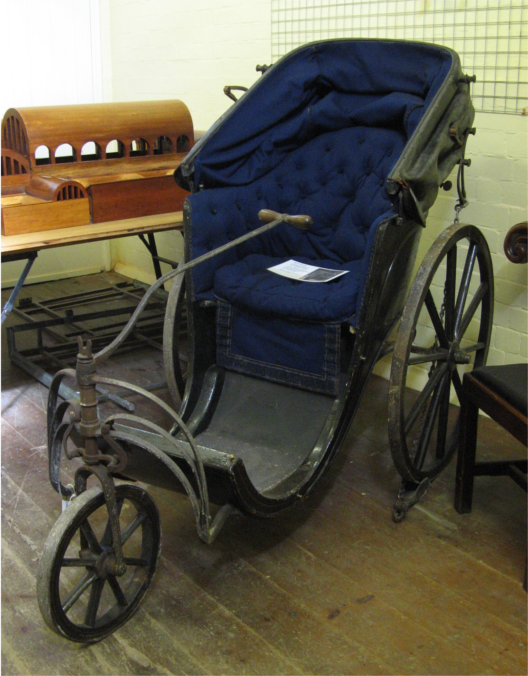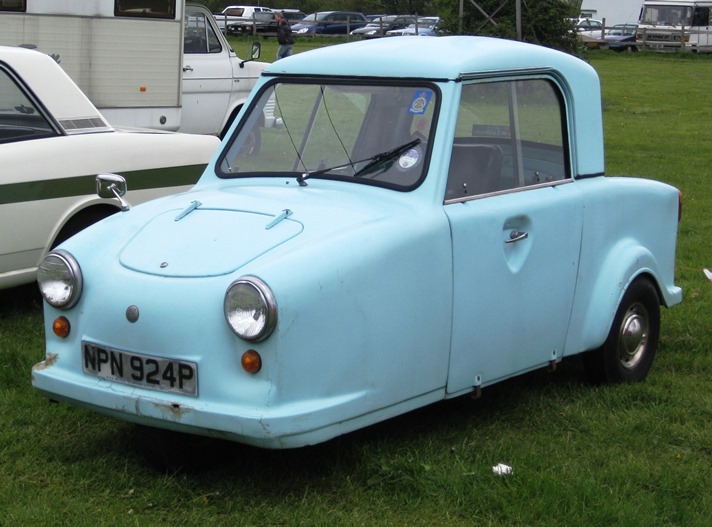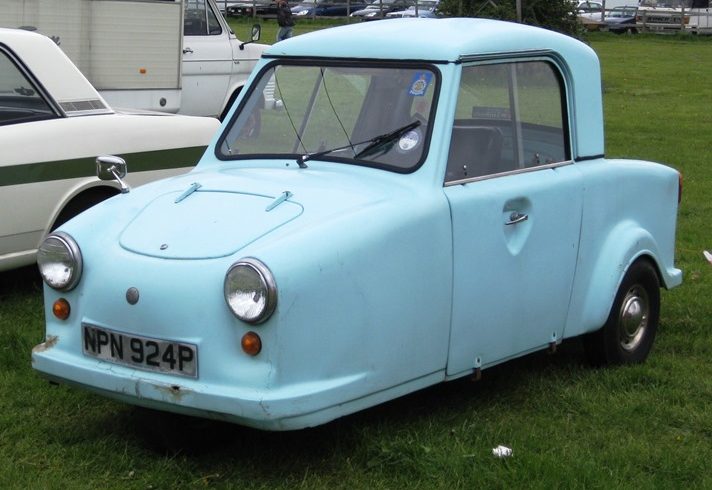Unsurprisingly, medieval disabled man (and woman) was very much dependent on others. It was helpful to have a few broad-shouldered friends, as being physically carried would have been the only means of participating in a cabbage hurling session down at the local stocks.
In 6th century China, wheel technology was applied to a chair allowing people to push their friends to the places they wanted to go. It took Europe around 500 years to catch on, when King Phillip II of Spain had a wheelchair constructed, complete with footrest and adjustable backrest. Too posh to push himself, he had a retinue of servants to fulfil that function.

A Bath Chair
The first self-propelled wheeled transport was invented in the 17th century by a disabled German watchmaker called Steven Farfler. His amazing contraption had hand-cranked cogs with which he could steer and propel himself. Engravings show a go-kart trike combination, slightly reminiscent of the 1970s Invacar– more of which later!
In the U.K., the Bath chair (invented in the mid-18th century in Bath – hence the name) remained popular for around two hundred years, propelled either by a human pushing or, sometimes, a donkey pulling! 1866 saw the development of the first self-propelled wheelchair.
The spread of motorised transport necessitated the wheelchair’s next major innovation – collapsibility. It was a disabled former miner who, together with an engineer friend, created a lightweight, folding wheelchair which could be stored in a car boot. The tubular steel frame enabled disabled passengers and drivers to enjoy the freedom of the road – which brings us back to the Invacar!
Anyone under the age of 40 probably won’t remember this cartoonish little three-wheeler zipping around during the 70s. Designed as an accessible vehicle for one person, it boasted space for a folding wheelchair, tiller steering, low sills and wide sliding doors.

The Invacar!
Designed by the manufacturer of the Cobra sports car, the Invacar’s fibreglass body could reach 82 mph. Its ride was hair-raising in cross-winds or when cornering. I can vouch for this, having accepted a lift in an Invacar in the late 70s. Better than any theme park ride!
The NHS leased Invacars to disabled people enabling them to enjoy work and leisure. Before its ban for safety reasons in 2003, it could still be seen enjoying a privileged spot at the edge of many a football pitch.
The Motability scheme replaced the Invacar, providing a choice of less conspicuous vehicles tailored to individual needs. Adaptations include the cool sounding “ghost ring” acceleration, and joystick steering. Plus, of course, the Blue Badge scheme means drivers can park as close as possible to their destination.
And what if you’re reliant on public transport? Life is made easier by WAVs (wheelchair accessible vehicles to you and me) – buses and trains using powered ramps and lifts, with designated wheelchair spaces.
Where steps are a problem, a futuristic option is the iBot, a powered stair-climbing wheelchair. Other emerging innovations include all-terrain tank tracks, thought-powered operation and even underwater wheelchairs. Remember what we said about trying something new – scuba diving anyone?
While technology is important in giving disabled people freedom and independence, negative attitudes present a greater barrier to access than any physical difficulty. Disabled Access Day’s role is to give disabled visitors and destinations the chance to extend physical and attitudinal boundaries by trying something new.
Whatever your mode of transport on 11 March, here’s wishing you a safe journey to new horizons from everyone at Eureka!



